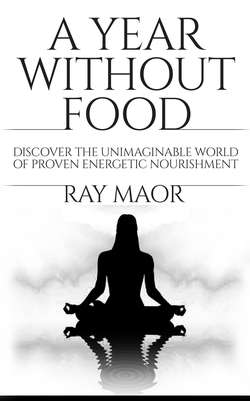Читать книгу A Year Without Food - Ray Maor - Страница 13
На сайте Литреса книга снята с продажи.
ОглавлениеTHE SCALE OF HUMAN NUTRITION
Many different groups of people distinguish themselves from others by their dietary choices. Some pick their diets consciously, others not so much. Some diets are based on philosophy and religion while others are maintained purely for health and other physical reasons. To help put things in perspective, I have pieced together a scale of human nutrition.
Let’s start with the omnivore whose diet today’s society deems normal. An omnivore consumes both plant and animal materials, often without any specific eating philosophy. Sometimes omnivores refine their diets to control physical appearance or health, to build muscle, lose weight or lower cholesterol.
Next is the well-known vegetarian who chooses not to eat meat. This is often a religious or philosophical choice, demonstrating compassion for animals subjected to harsh practices in the meat industry. In recent years, research such as The China Study2 has proved that excessive consumption of meat—more than three meals a week—is not as healthy for the human body as was once thought. This has provided new motivation for people to become vegetarian.
Taking this a step further is the vegan who chooses to consume neither animals nor products derived from them including honey, dairy and eggs. Then there is the raw foodist who eats mostly fruits, nuts and vegetables in their natural raw form. This food philosophy encourages the consumption of food not heated above 40 °C because cooking heat damages the delicate nutrients and enzymes which nourish the body and aid digestion. Some raw foodists choose to go even deeper into the mechanics of the digestion process by following the rules of proper food combinations.
Following the raw food movement are lesser-known practitioners such as fruitarians who choose to be nourished solely from unprocessed fruits and liquidarians who blend raw food into soups and smoothies. Of course, individuals follow each of these diets to varying degrees. Some vegetarians eat fish, some vegans consume honey and some raw foodists enjoy a cooked meal from time to time. Levels of commitment are entirely up to individuals.
In general, the further along a person is on this scale, the easier it is for their digestive system to function and the cleaner and healthier their body becomes. These lifestyles also free up energy to perform other activities. Today most diseases are caused by bad nutrition and body toxicity. Until about 150 years ago, the human race only consumed fresh food. More recent inventions like pesticides, chemical preservatives, high sugar concentrates, chemical sugar replacements, fast food and the increase in food processing has thrown our alkaline/acid dietary balances way out of proportion. In a nutshell, our body needs an 80:20 (or at least 60:40) balance of alkaline to acid compounds to thrive. For the most part, fruits and vegetables are alkaline while meat, bread and other wheat/grain products, dairy and sugary foods contribute to acidity and toxicity in the body.
Many spiritual seekers naturally feel called to climb higher along this scale of nutrition towards vegetarian/vegan/raw food/fruitarian/liquidarian ways of life.
While the initial motivation may be to accept responsibility for the mistreatment of animals, it soon develops into a deeper understanding. Our body is our temple and what we allow into the body has an impact on the mind-body-spirit connection. The more you take care of your body, the easier it is to progress along your spiritual path.
The above scale describes most of the human race; people who consume food to satisfy both hunger and nutritional needs. There is no judgment here, just a statement of the facts most people tend to take for granted. For most people, food equals survival; there is no choice and they feel the need to consume a certain amount of food daily. The daily intake of vitamins, minerals, proteins, carbohydrates and many other nutrients must be in balance to provide sustainable energy sources for the body. This makes sense, though the general consciousness is pushing more and more towards greater health. Over recent years, more people have been making vegetarian and vegan choices and it is important to recognize how this goes hand in hand with the growth of our collective consciousness towards a healthier path.
The two most common types of ‘light eaters’ are breatharians and sungazers (who focus on the rising and setting sun to collect pranic nourishment). Breatharians get nutrition from a source other than food and exist on a completely different scale; they do not need to consume physical food for nourishment. Instead, they live directly off the life force or prana. Some breatharians live 100% off prana and do not even need to drink water! I am aware of only two people who live this way.
Perhaps you have heard of breatharians who live in India or Brazil following very disciplined spiritual paths. Let it be known that there are also breatharians such as myself who live in urban cities and maintain regular, modern, day-to-day lifestyles.
In order to simplify the differences, I have created a short table that describes the main differences between the two lifestyles.
There are many additional differences discussed throughout this book.
